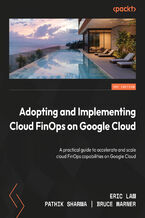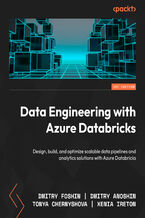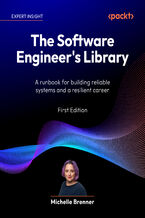
Securing WebLogic Server 12c. Learn to develop, administer and troubleshoot for WebLogic Server with this book and Rinaldi Vincenzo, Luca Masini, Vincenzo Rinaldi




- Autorzy:
- Rinaldi Vincenzo, Luca Masini, Vincenzo Rinaldi
- Wydawnictwo:
- Packt Publishing
- Ocena:
- Stron:
- 100
- Dostępne formaty:
-
PDFePubMobi
 opcje wysyłki »
opcje wysyłki »
Opis
książki
:
Securing WebLogic Server 12c. Learn to develop, administer and troubleshoot for WebLogic Server with this book and
Transparent security of your applications and Weblogic infrastructure need a good knowledge of the issues you can incur in this long and error prone configuration process.
Securing WebLogic Server 12c will simplify a complex world like WebLogic Security, helping the reader to implement and configure. It's the only fast guide that will let you develop and deploy in a production system with best practices both from the development world and the operation world.
This book will try to make a clear picture of Java EE Security with clean and simple step-by-step examples that will guide the reader to security implementation and configuration
From the concepts of Java EE Security to the development of secure application, from the configuration of a realm to the setup of Kerberos Single Sign on, every concept is expressed in simple terms and surrounded by examples and pictures. Finally, also a way to develop WebLogic Security Providers with Maven, so that you can add the security part of your infrastructure to your enterprise best practices.
Wybrane bestsellery
Packt Publishing - inne książki
Dzięki opcji "Druk na żądanie" do sprzedaży wracają tytuły Grupy Helion, które cieszyły sie dużym zainteresowaniem, a których nakład został wyprzedany.
Dla naszych Czytelników wydrukowaliśmy dodatkową pulę egzemplarzy w technice druku cyfrowego.
Co powinieneś wiedzieć o usłudze "Druk na żądanie":
- usługa obejmuje tylko widoczną poniżej listę tytułów, którą na bieżąco aktualizujemy;
- cena książki może być wyższa od początkowej ceny detalicznej, co jest spowodowane kosztami druku cyfrowego (wyższymi niż koszty tradycyjnego druku offsetowego). Obowiązująca cena jest zawsze podawana na stronie WWW książki;
- zawartość książki wraz z dodatkami (płyta CD, DVD) odpowiada jej pierwotnemu wydaniu i jest w pełni komplementarna;
- usługa nie obejmuje książek w kolorze.
Masz pytanie o konkretny tytuł? Napisz do nas: sklep@helion.pl
Książka drukowana
































Oceny i opinie klientów: Securing WebLogic Server 12c. Learn to develop, administer and troubleshoot for WebLogic Server with this book and Rinaldi Vincenzo, Luca Masini, Vincenzo Rinaldi
(0)